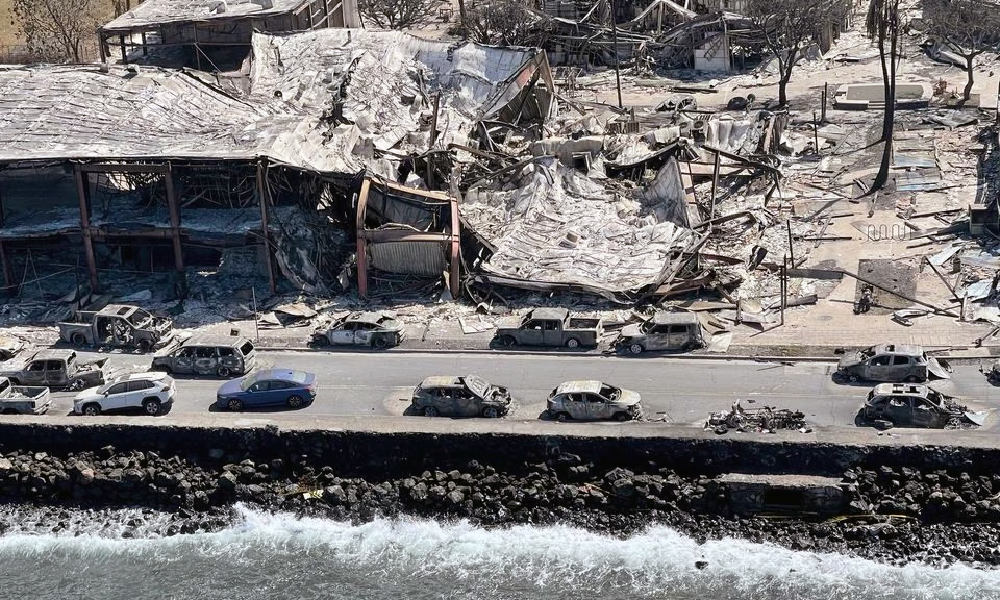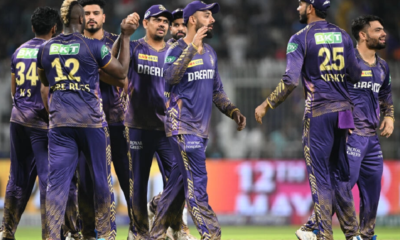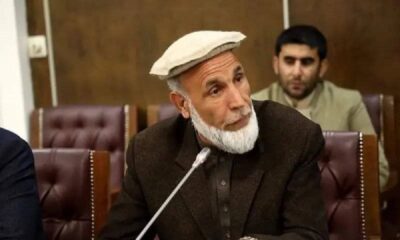Climate Change
Maui wildfires deadliest in a century after death toll hits 89

The death toll from the Maui wildfires is now at 89, officials said on Saturday, making it the deadliest U.S. wildfire in more than a century, Reuters reported.
The scale of the damage came into sharper focus on Saturday, as search teams with cadaver dogs sifted through the ruins of Lahaina, four days after a fast-moving blaze leveled the historic resort town, obliterating buildings and melting cars.
The cost to rebuild Lahaina was estimated at $5.5 billion, according to the Federal Emergency Management Agency (FEMA), with more than 2,200 structures damaged or destroyed and more than 2,100 acres (850 hectares) burned.
Governor Josh Green warned at a news conference on Saturday afternoon that the death toll would continue to rise as more bodies were discovered, read the report.
Officials vowed to examine the state’s emergency notification systems after some residents questioned whether more could have been done to warn people before the fire overtook their homes. Some were forced to wade into the Pacific Ocean to escape.
Sirens stationed around the island – intended to warn of impending natural disasters – never sounded, and widespread power and cellular outages hampered other forms of alerts.
The state’s attorney general, Anne Lopez, said she was launching a review of the decision-making both before and during the fire, while Green told CNN he had authorized a review of the emergency response.
Local officials have described a nightmarish confluence of factors, including communications network failures, powerful wind gusts from an offshore hurricane and a separate wildfire dozens of miles away, that made it nearly impossible to coordinate in real time with the emergency management agencies that would typically issue warnings and evacuation orders.
According to Reuters the death toll made the inferno, which erupted on Tuesday, Hawaii’s worst natural disaster in history, surpassing a tsunami that killed 61 people in 1960, a year after Hawaii became a U.S. state.
The latest death toll exceeded the 85 people who perished in a 2018 fire in the town of Paradise, California, and was the highest toll from a wildfire since 1918, when the Cloquet fire in Minnesota and Wisconsin claimed 453 lives.
Touring Lahaina earlier on Saturday, Green said state and federal agencies were working to aid those who had survived.
“Our focus now is to reunite people where we can, and to get them housing and get them health care, and then turn to rebuilding,” he said.
Authorities began allowing residents back into west Maui on Friday, although the fire zone in Lahaina remained barricaded. Officials warned there could be toxic fumes from smoldering areas and said search operations were continuing.
“It’s going to be sad to get down there,” said Za Dacruz, 33, as he waited on Friday in a traffic jam to try to return to Lahaina. “We’re just looking for everyone to be alive, to be safe – that’s all we’re trying to do. And the rest? We’ll go from there.”
Hundreds of people were still missing, though a precise count was not clear, Reuters reported.
At a family assistance center in Kahului, June Lacuesta said he was trying to locate nine relatives who had not been heard from since Tuesday.
“When I see Lahaina town itself, I cannot describe the feelings I get,” said Lacuesta, who was headed to a church shelter next to continue his search.
The disaster began just after midnight on Tuesday when a brush fire was reported in the town of Kula, roughly 35 miles (56 km) from Lahaina.
About five hours later, power was knocked out in Lahaina. In updates posted on Facebook that morning, Maui County said a three-acre (1.2-hectare) brush fire cropped up in Lahaina around 6:30 a.m. but had been contained by 10 a.m.
Subsequent updates were focused on the Kula fire, which had burned hundreds of acres and forced some local evacuations. But at around 3:30 p.m., according to the county’s updates, the Lahaina fire flared up.
Some residents began evacuating while people, including hotel guests, on the town’s west side were instructed to shelter in place. In the ensuing hours, the county posted a series of evacuation orders on Facebook, though it was not clear whether residents were receiving them as people frantically fled the fast-advancing flames.
Some witnesses said they had little warning, describing their terror as the blaze destroyed the town around them in what seemed to be a matter of minutes.
Climate Change
Summer 2023 was the hottest in 2,000 years, study says

The intense northern hemisphere summer heat that drove wildfires across the Mediterranean, buckled roads in Texas and strained power grids in China last year made it not just the warmest summer on record – but the warmest in some 2,000 years, new research suggests.
The stark finding comes from one of two new studies released on Tuesday, as both global temperatures and climate-warming emissions continue to climb, Reuters reported.
Scientists had quickly declared last year’s June to August period as the warmest since record-keeping began in the 1940s.
New work published in the journal Nature suggests the 2023 heat eclipsed temperatures over a far longer timeline – a finding established by looking at meteorological records dating to the mid-1800s and temperature data based on the analysis of tree rings across nine northern sites.
“When you look at the long sweep of history, you can see just how dramatic recent global warming is,” said study co-author Jan Esper, a climate scientist at Johannes Gutenberg University in Germany.
Last year’s summer season temperatures on lands between 30 and 90 degrees north latitude reached 2.07 degrees Celsius higher than pre-industrial averages, the study said.
Based on tree ring data, the summer months in 2023 were on average 2.2 C warmer than the estimated average temperature across the years 1 to 1890.
The finding was not entirely a surprise. By January, scientists with the European Union’s Copernicus Climate Change Service were saying the year of 2023 was “very likely” to have been the warmest in some 100,000 years.
However, proving such a long record is unlikely, Esper said. Heatwaves are already taking a toll on people’s health, with more than 150,000 deaths in 43 countries linked to heatwaves for each year between 1990 and 2019, according to the details of a second study published on Tuesday in the journal PLOS Medicine.
That would account for about 1% of global deaths – roughly the same toll taken by the global COVID-19 pandemic, Reuters reported.
More than half of those heatwave-related excess deaths occurred in populous Asia.
Climate Change
Afghanistan a victim of climate change, says Muttaqi

The Acting Minister of Foreign Affairs, Amir Khan Muttaqi, met with Edem Wosornu, UNOCHA Director of Operations and Advocacy on Monday in Kabul and said although Afghanistan plays no role in the “destruction of the climate”, the country continues to suffer from this phenomenon.
Muttaqi appealed to countries contributing to the climate change problem to act responsibly as they are not doing anything in terms of compensating countries suffering the effects of climate change.
This comes just days after heavy rains claimed the lives of over 300 people in northern Afghanistan as flash floods hit the area.
Muttaqi meanwhile also said that Afghanistan should be allowed to participate at global climate change meetings and the country should have access to funding.
Wosornu in turn expressed her willingness to send UNOCHA teams to flood affected areas as soon as possible.
She also said they try to keep humanitarian needs and politics separate.
Climate Change
Rescuers race to reach those trapped by floods in China’s Guangdong

WATCH: Rescuers on boats in China’s flood-ravaged Guangdong province raced to evacuate trapped residents, carrying some elderly people by piggyback from their homes and deploying helicopters to save villagers caught in rural landslides.
The southern Chinese province has been battered by unusually heavy, sustained and widespread rainfall since Thursday, with powerful storms ushering in an earlier-than-normal start to the region’s annual flooding season, Reuters reported.
Eleven people were missing in Guangdong by Monday morning, the state-owned Xinhua News Agency reported without giving further details.
Across the province, 53,741 people have been relocated, with 12,256 people being urgently resettled, Xinhua reported, citing the provincial government.
The cities of Shaoguan, Qingyuan, Zhaoqing and Jiangmen to the west and north of the provincial capital Guangzhou have been particularly hard hit.
In Qingyuan, houses and shops along the Bei River were submerged as the Pearl River tributary swelled, local media reported.
Aerial footage showed flood waters overwhelming a nearby town, leaving only roofs and treetops untouched.
Rescuers in Qingyuan tackled muddy waters, neck-high in some areas, to extract residents, including an elderly lady trapped in waist-deep water in an apartment building, videos on social media showed.
Other social media videos showed water gushing through roads and vehicles in disarray.
In Shaoguan, landslides trapped villagers who had to be rescued by helicopter while other rescuers traveled on foot to reach cut-off disaster sites, Reuters reported.
The Chinese military also stepped in to help clear roads.
The rains eased early on Monday, but some schools in the province were suspended.
Powerful thunderstorms are expected to return later in the week after a brief respite, marking an unusually early wet spell that is more typical in the months of May and June.
-

 Business4 days ago
Business4 days agoAfghanistan, Pakistan agree on new travel mechanism for truckers
-

 Sport4 days ago
Sport4 days agoKolkata down Mumbai to confirm IPL play-off berth
-

 Business3 days ago
Business3 days agoAfghanistan can become important industrial center in region: Hanafi
-

 Latest News4 days ago
Latest News4 days agoEx-MP Allah Gul Mujahid arrested in connection with a murder
-

 Latest News4 days ago
Latest News4 days agoBaghlan floods leave 315 dead and over 15,00 injured so far
-

 Latest News4 days ago
Latest News4 days agoSeveral countries express solidarity with Afghanistan after flash floods kill hundreds
-

 Latest News4 days ago
Latest News4 days agoInvesting in Afghanistan mines can be profitable for Iranian industry: Qiafeh
-

 World4 days ago
World4 days agoCanadian police arrest fourth man for murder of Sikh leader Nijjar
























